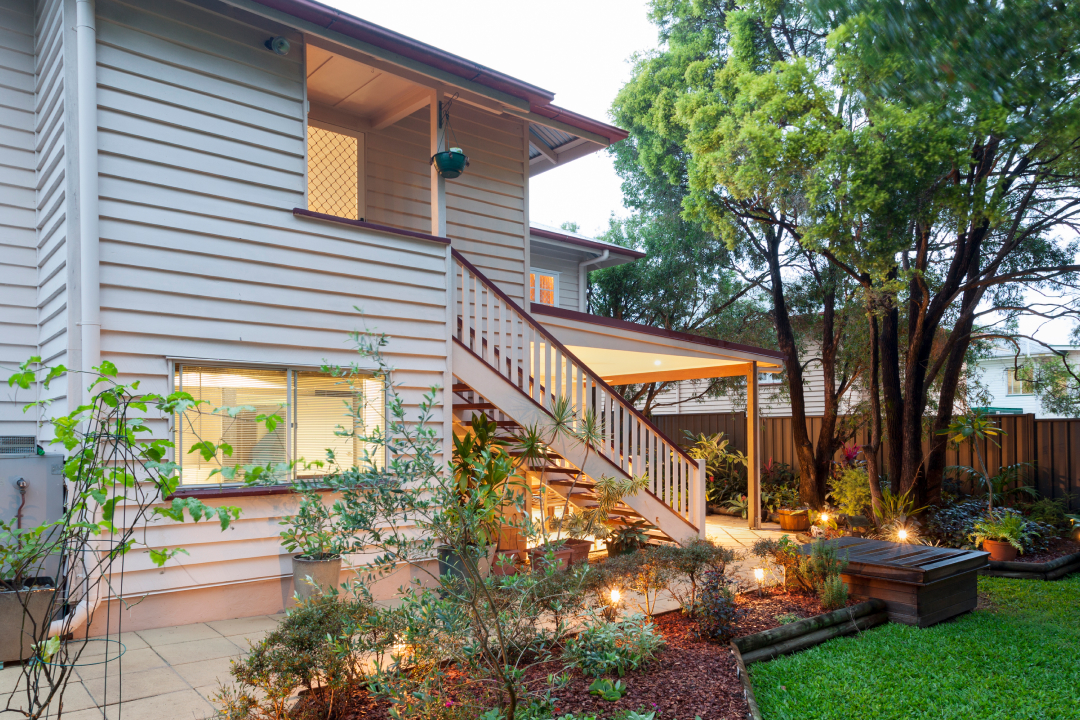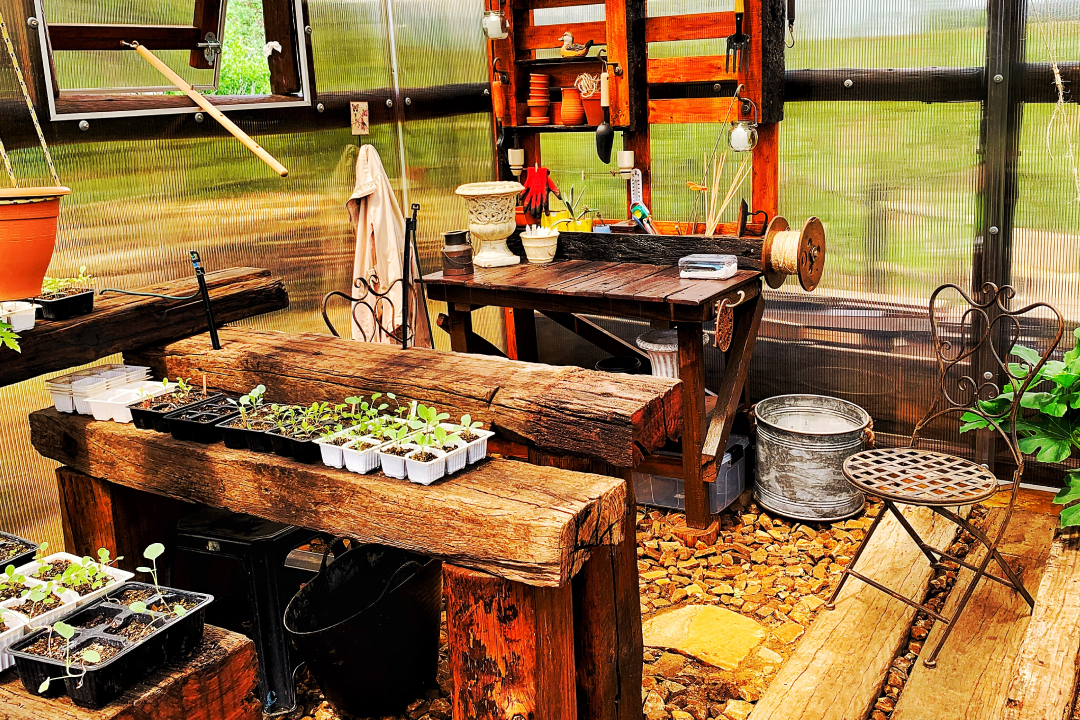Queenslander homes are an iconic part of Australia’s architectural heritage, renowned for their charming character, timber construction, and high-set designs. Built to endure the tropical climate, these homes are well-suited to natural ventilation and flood-prone areas. However, as climate challenges intensify, updating Queenslanders for resilience to heatwaves, storms, and other extreme weather events has become a pressing necessity.
When Will and I began renovating our 1930s Queenslander our primary goals were climate resilience and preserving the house’s unique charm. We came up with a list of six ways we could improve the longevity and liveability of our home without sacrificing the Queenslander look and feel.
1. Insulation and Ventilation
Queenslander homes often feature large windows, high ceilings, and verandahs to encourage airflow. While these features are excellent for ventilation, they may lack modern insulation.
Upgrades to consider:
- Roof Insulation: Install high-quality thermal insulation in the roof cavity to reduce heat transfer during summer and retain warmth in winter.
- Wall Insulation: Retrofitting walls with insulation materials, such as wool or rigid foam boards, can significantly improve energy efficiency.
- Improved Ventilation: Enhance cross-ventilation by adding operable louvers or casement windows. Ceiling fans can also help keep air circulating without relying on air conditioning.
Our home had a 70-year-old leaky roof so replacing it was an easy decision. This allowed us to wrap the roof space in a thermal blanket as well as updating the tired looking bats. Many of our verandahs had been built in using asbestos sheeting so once that was professionally removed, we matched the planks to the original hardwood boards and used VJ panels on the internal walls to create a cavity for insulation.
2. Protecting Against Flooding
Many Queenslanders are built on stumps, which provide a natural defence against flooding. However, rising sea levels and more intense storms mean additional measures may be needed.
Upgrades to consider:
- Stump Replacement: If the stumps are deteriorating, replace them with reinforced, adjustable stumps to elevate the home further.
- Waterproofing and Drainage: Ensure underfloor areas are properly drained and use water-resistant materials like concrete or treated timber.
During our renovations we experienced many nasty surprises including concrete collars, on several stumps, designed to hide old termite damage and that the ground at the side of the house was higher than floor level allowing water to flood into the storage area every time it rained. We engaged a building engineer to help us solve these problems and are now termite-damage free and watertight.
3. Cyclone and Storm Readiness
Northern Queensland is no stranger to cyclones and extreme storms, but the Southeast is now regularly experiencing these types of storms as well. Strengthening your home against high winds and heavy rain is crucial.
Upgrades to consider:
- Reinforced Roofing: Secure roofs with cyclone-rated fasteners and replace older materials with metal or other durable options.
- Window Protection: Install cyclone shutters or impact-resistant glass to protect windows during storms.
- Structural Reinforcements: Strengthen connections between the roof, walls, and foundation to prevent structural damage from high winds.
As part of our roof and structural upgrades we were required by law to include cyclone mitigation and given the strength of recent storms I’m thankful for this legislation!
4. Sustainable Energy Solutions
Making a Queenslander climate-resilient also involves reducing its carbon footprint.
Upgrades to consider:
- Solar Panels: Install solar panels to take advantage of Queensland’s abundant sunshine. Consider battery storage to ensure power during outages.
- Energy-Efficient Lighting: Replace older bulbs with LED lighting to cut energy usage.
- Natural Shading: Plant trees strategically around your home to provide shade and reduce heat absorption.
We upgraded and increased the number of solar panels on our home’s roof. We also built a carport strong enough to hold panels allowing us to charge our electric car at home. Taking advantage of various government schemes we recently had an electric hot water heat pump and batteries installed.
Another way we dropped the house’s internal temperature was by installing shade sails over the lower-level decks. An added bonus of these is we now have areas where we can grow additional fruit trees and veggies protected from the harsh sun.5. Modern Materials with Traditional Aesthetics
Preserving the look and feel of a Queenslander is essential for maintaining its charm. Fortunately, modern materials can blend seamlessly with traditional designs while improving durability.
Upgrades to consider:
- Composite Timber Alternatives: Use composite materials for decks and railings to reduce maintenance and improve longevity.
- Fire-Resistant Materials: In bushfire-prone areas, consider fire-resistant cladding and roofing that mimic the traditional Queenslander style.
We opted for recycled composite decking and fire-resistant products as we’re in a bushfire prone area.
6. Water Efficiency and Harvesting
Queensland frequently experiences droughts, making water conservation a priority.
Upgrades to consider:
- Rainwater Tanks: Install tanks to capture water for irrigation, laundry, and even household use with proper filtration.
- Greywater Systems: Redirect greywater from sinks and showers for use in the garden.
- Low-Flow Fixtures: Replace older taps and showerheads with low-flow options to reduce water usage.
Our home came with a 30 000 litre water tank that had long been disused and disconnected from the downpipes. We cleaned out decades of sludge, had a new liner made and reconnected the downpipes. Our tank is now full and connected to our watering system.
Balancing Heritage with Sustainability
Renovating a Queenslander for climate resilience doesn’t mean sacrificing its charm. By working with heritage specialists and using modern, sustainable technologies, you can ensure your home is both a nod to history and a step toward the future.
Taking these steps not only protects your investment but also contributes to a more sustainable and resilient community. With the right upgrades, your Queenslander can thrive in the face of Queensland’s evolving climate challenges.
Our beautiful old home is a testament to what can be done if you are willing to invest in a project of the heart.
Have you renovated your Queenslander for climate resilience? Share your experiences in the comments below!



